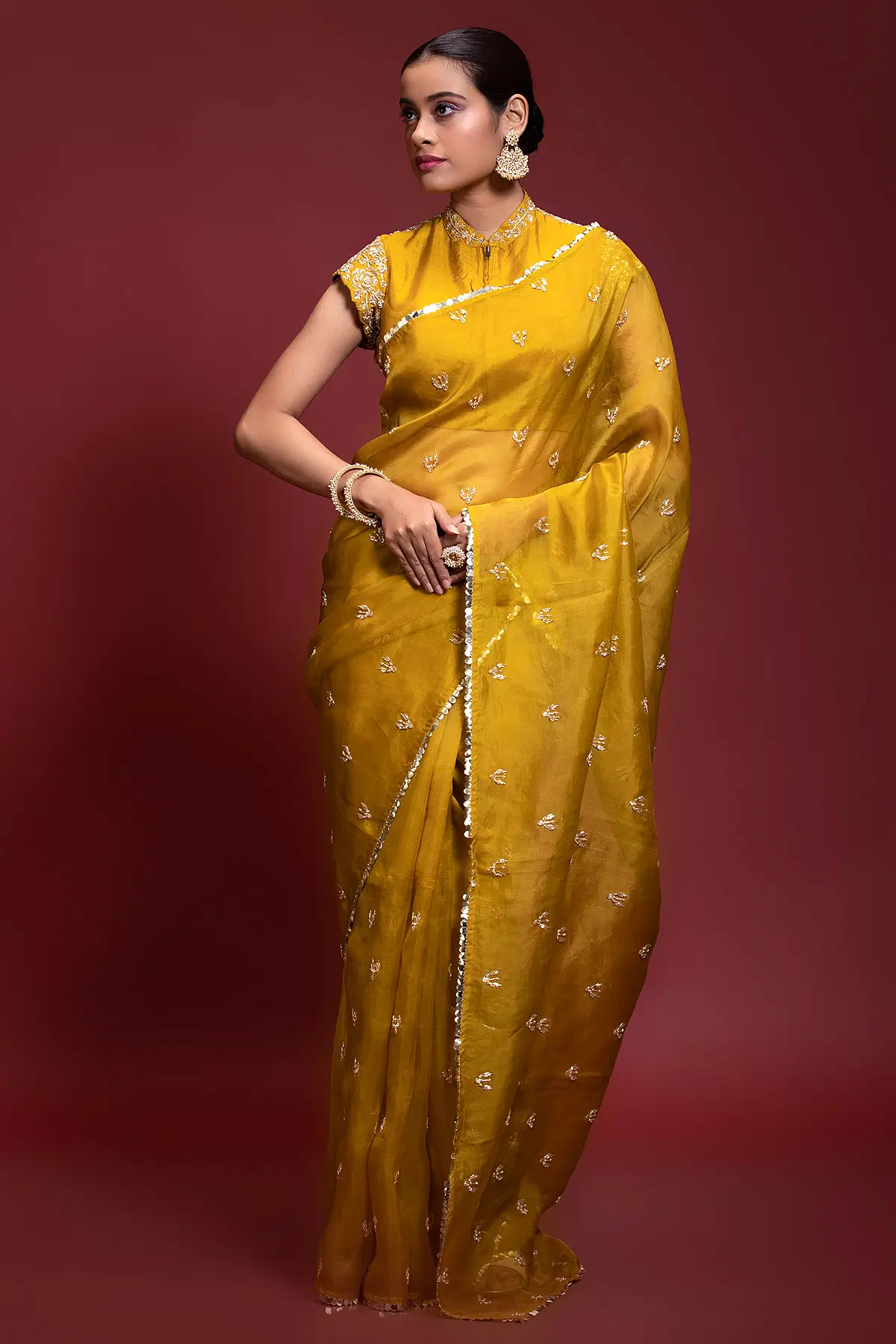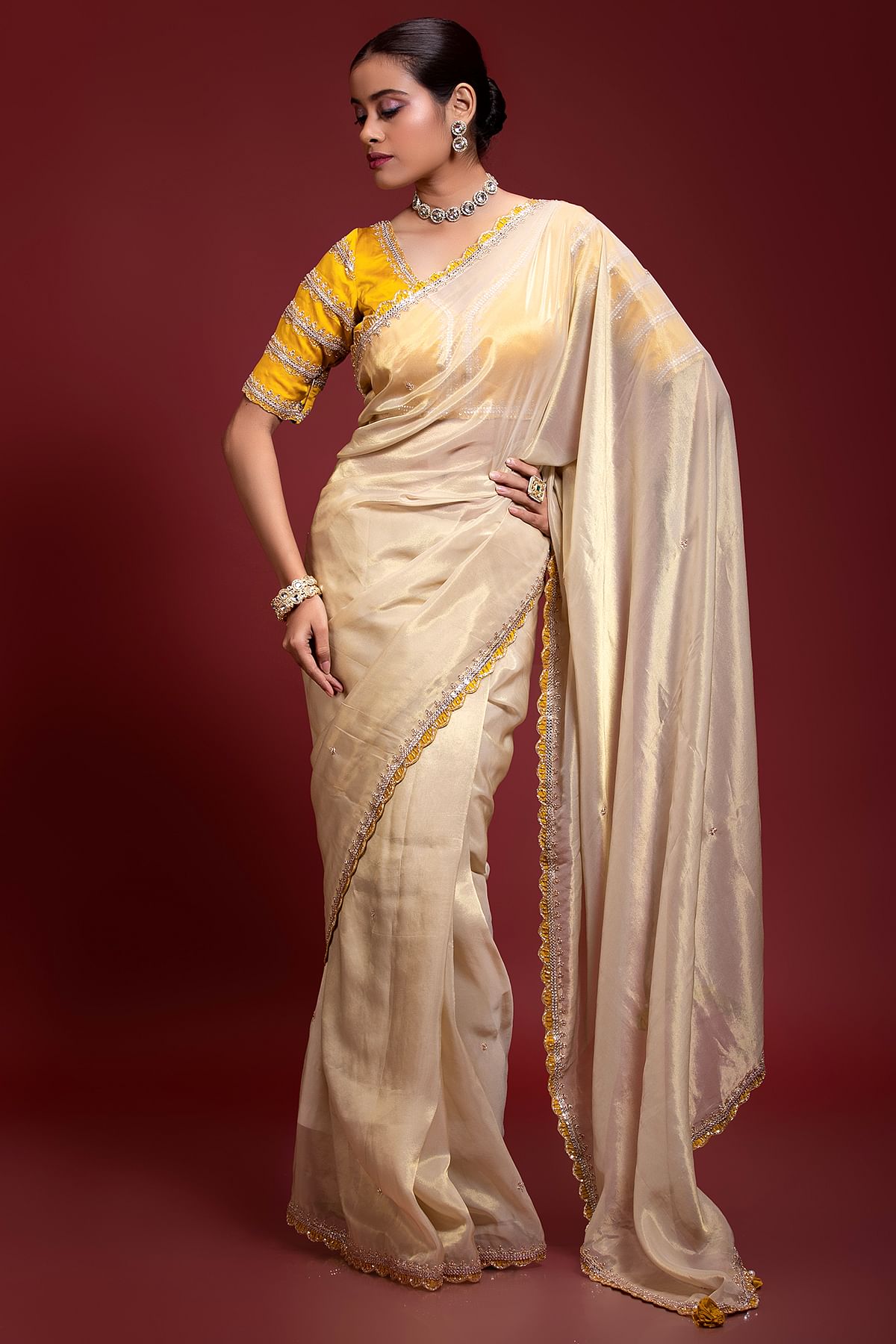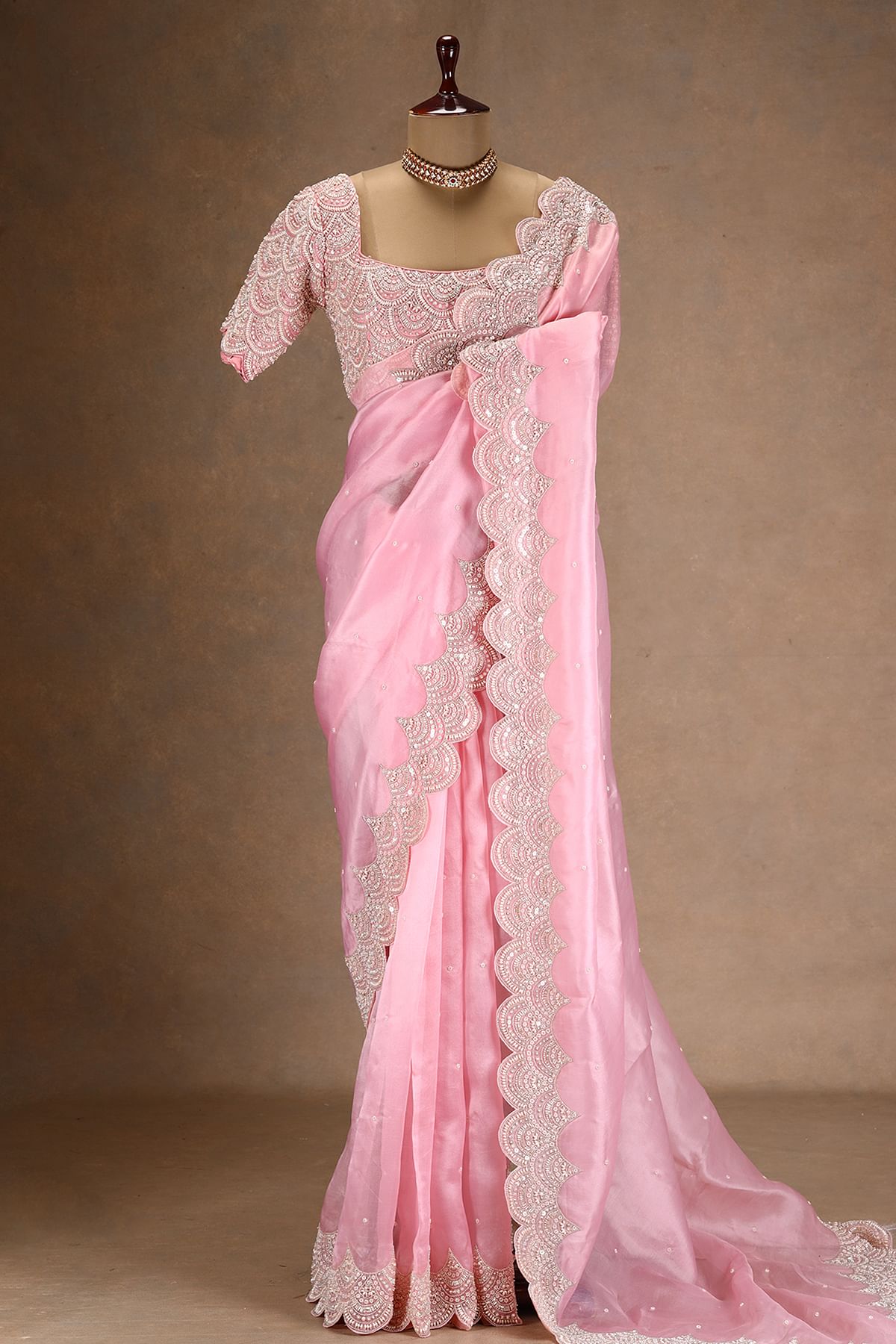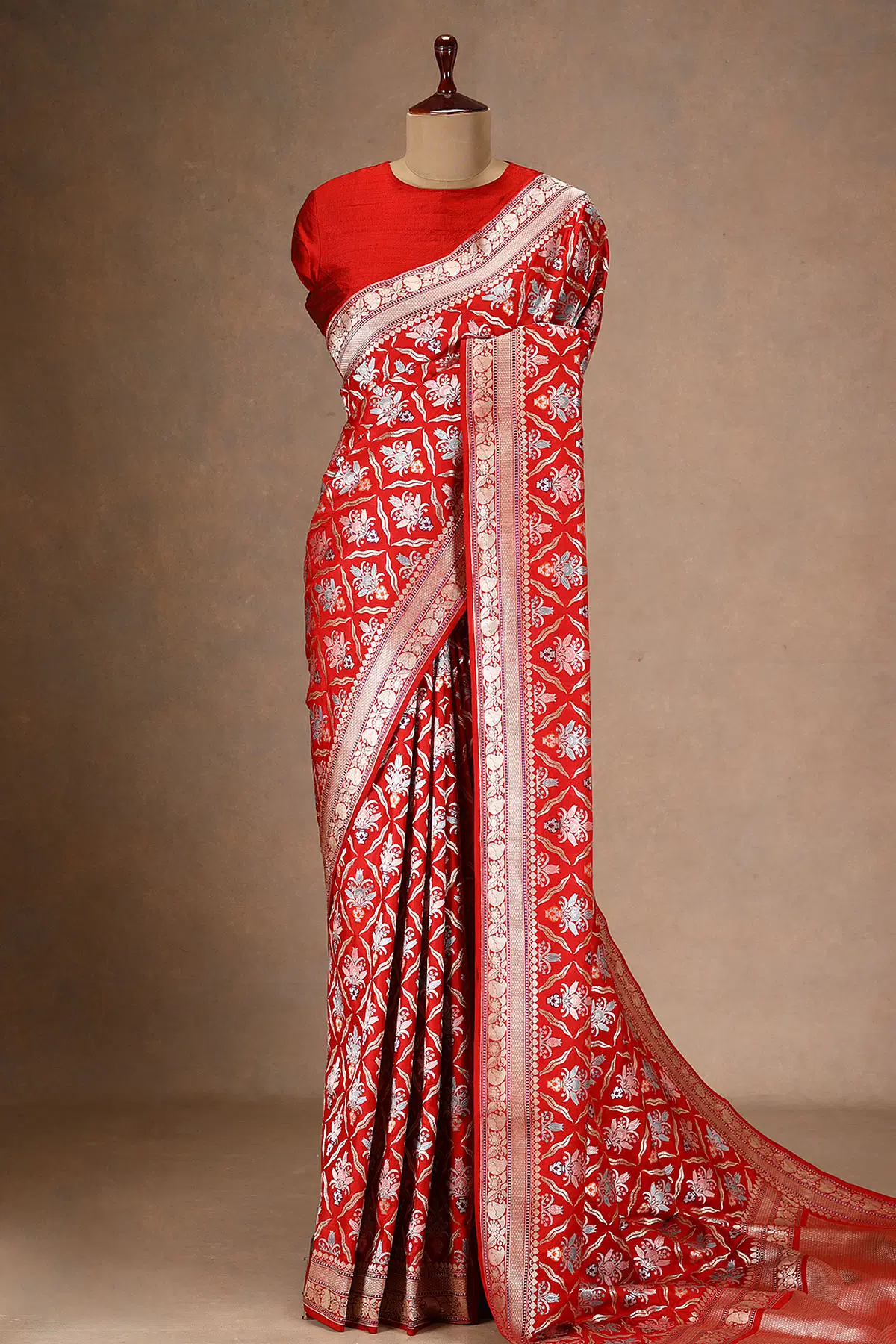The choice between silk sarees and organza sarees often boils down to personal taste and occasion. Both fabrics are stunning, but they bring different qualities to the table. In this detailed guide, we’ll delve into the charm of both fabrics, helping you decide which one aligns best with your preferences and needs.
Silk Sarees: The Perfect Fusion of Grace and Tradition
Silk sarees are steeped in tradition and hold a special place in the hearts of Indian women. Their origins date back centuries, with every region of India contributing its unique variation, such as Kanchipuram silk, Banarasi silk, and Tussar silk. Known for their opulent texture and vibrant sheen, these sarees are more than just garments—they’re heirlooms passed down through generations.
The natural softness of silk makes it a pleasure to wear, draping effortlessly around the body to create a sophisticated silhouette. Whether it’s a grand wedding or a cultural celebration, silk sarees elevate your look with their unmatched grandeur. Additionally, their intricate weaves and motifs often narrate stories of Indian craftsmanship, making each piece a work of art.
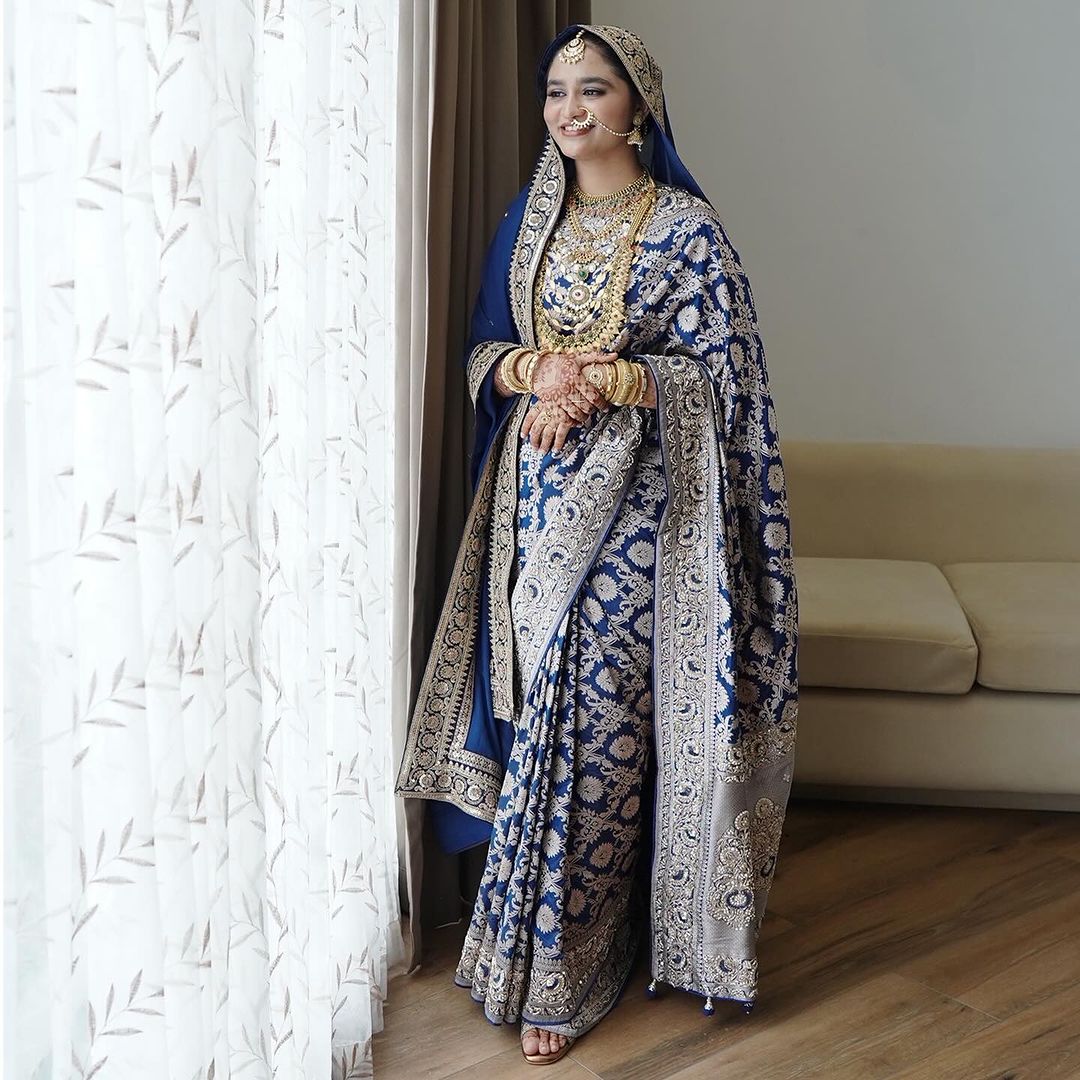
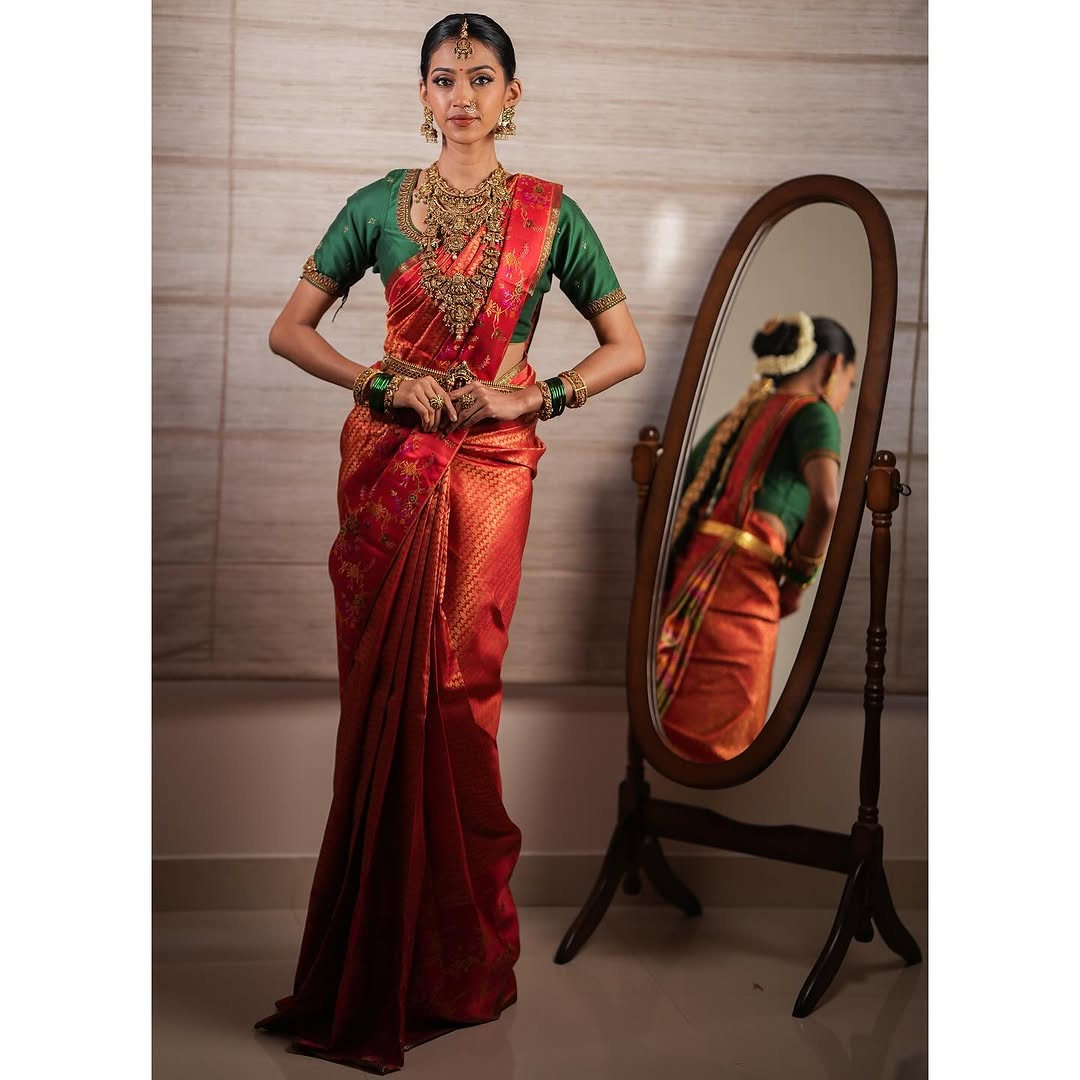
Organza Sarees: The Epitome of Modern Grace and Sophistication
If silk sarees are about tradition, organza sarees embody contemporary charm. Lightweight, crisp, and semi-transparent, organza has emerged as a favorite for modern occasions. This fabric’s airy structure gives it a dreamy, flowy aesthetic that is perfect for receptions, cocktail parties, or summer weddings.
What sets organza apart is its ability to hold pleats impeccably, resulting in a structured yet delicate look. Its surface often serves as a canvas for intricate embroidery, floral motifs, or even hand-painted designs, offering a unique combination of simplicity and artistry. Organza, though delicate in its look, is sturdier than it seems and can maintain its stunning appeal with the right care.
Silk vs. Organza Saree: A Head-to-Head Comparison
| Attributes | Silk Saree | Organza Saree |
| Weight | Heavier due to its dense weave | Lightweight and airy |
| Occasions | Ideal for traditional and formal events | Perfect for casual and semi-formal settings |
| Texture | Soft, smooth, and luxurious | Crisp with a stiff finish |
| Maintenance | Requires delicate care and dry cleaning | Easy to store but prone to snags |
| Style Appeal | Regal and timeless | Modern, playful, and chic |
Silk Or Organza: Which Saree to Choose for Every Occasion?
The right fabric often depends on the occasion. For grand festivities or traditional ceremonies, silk sarees reign supreme. Their vibrant colors and rich textures make them ideal for standing out in a crowd. Imagine walking into a wedding in a stunning Kanchipuram saree —there’s no denying the royal aura you’ll exude.
In contrast, organza sarees are the perfect choice for more modern or minimalist settings. Their lightweight feel and contemporary designs make them a hit for cocktail parties, destination weddings, or even casual brunches. An organza saree allows you to make a bold yet elegant statement with its subtle sheen and artistic detailing.
Styling Silk Sarees: From Regal to Chic
Silk sarees are a canvas for timeless styling. To maintain their traditional appeal, pair them with antique gold jewelry or temple-inspired necklaces. Enhance the cultural allure by accessorizing with a vibrant bindi and a bun elegantly decorated with fresh blossoms.
If you want to experiment, try pairing a silk saree with a trendy blouse featuring cold shoulders or intricate beadwork. This combination bridges the gap between heritage and modern fashion, making it suitable for contemporary events too.
Styling Organza Sarees: Contemporary Glamour at Its Best
Organza sarees demand a minimalist approach to styling. Their natural elegance shines through when paired with sleek diamond jewelry or pearl accessories. Keep your hairstyle simple with loose waves or a messy bun to complete the look.
Blouses are where you can get creative. Choose halter necks, corset-style designs, or even sheer backless options to amplify the saree’s modern vibe. The structured nature of organza ensures that your pleats remain intact throughout the event, keeping your look polished.
Weather-Wise Fabric Preferences: Silk for Winters, Organza for Summers
Climate plays a significant role in deciding between silk and organza sarees. Silk, with its slightly heavier and insulating texture, is ideal for winter weddings and cooler climates. It not only keeps you warm but also offers a rich, festive appeal.
Organza, being airy and lightweight, is the ultimate choice for summer and spring events. Its breathable nature ensures comfort, even during sweltering heat, without compromising on elegance.
Durability and Maintenance: Which Fabric Lasts Longer?
Silk sarees are a long-term investment. When stored correctly, they can last for decades, often becoming heirlooms. It’s essential to store them in a cool, dry place and use muslin or cotton covers to protect the fabric. Regular dry cleaning is recommended to maintain their luster.
Organza sarees, though slightly less enduring, are easier to maintain. Gentle hand washing or professional cleaning can keep them in pristine condition. However, organza’s crisp texture can be susceptible to creasing, so proper folding and storage are crucial.
Final Thought
Whether you lean towards the classic allure of silk sarees or the modern sophistication of organza sarees, your choice should reflect your personal style and the event at hand. Both fabrics have their own unique appeal, and adding one of each to your wardrobe can give you the best of both worlds. To explore a stunning collection of silk and organza sarees that combine tradition with contemporary flair, visit Samyakk and discover craftsmanship at its finest.
Also Read:-

